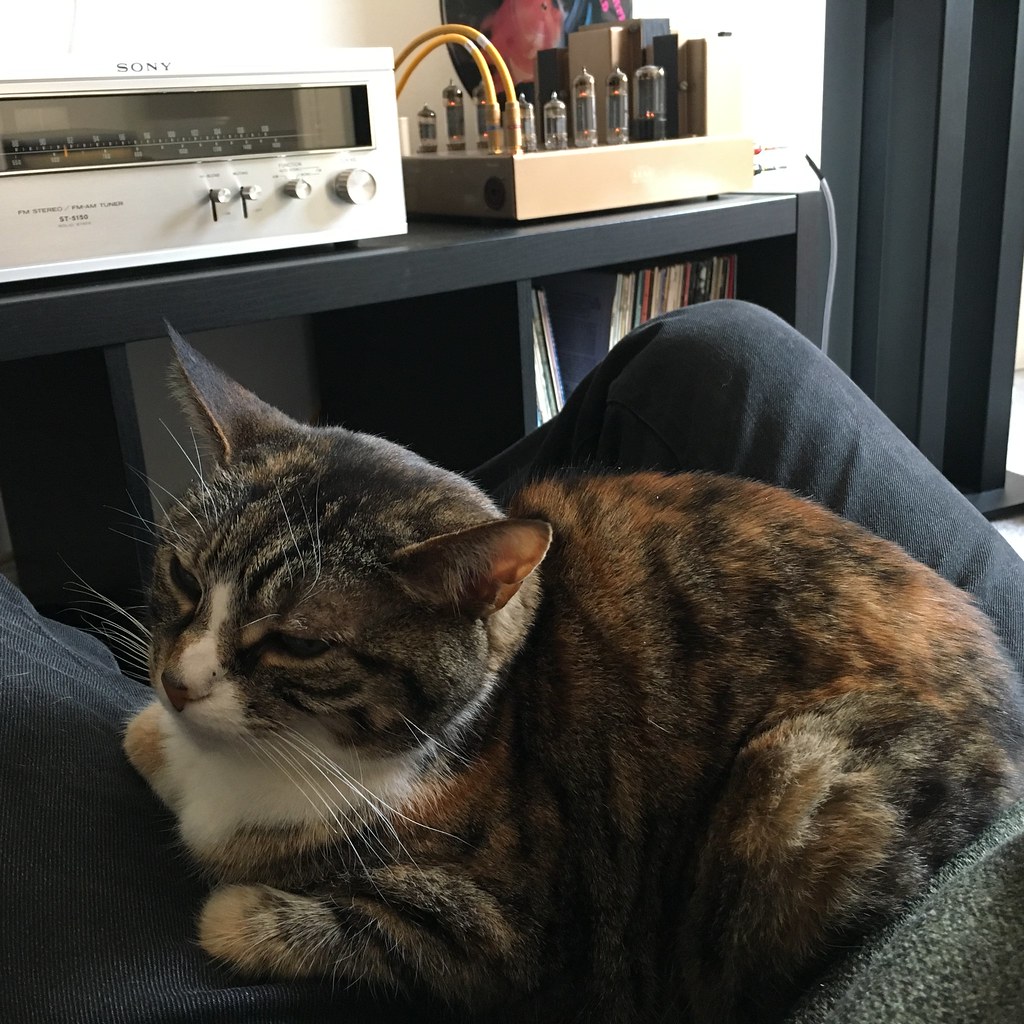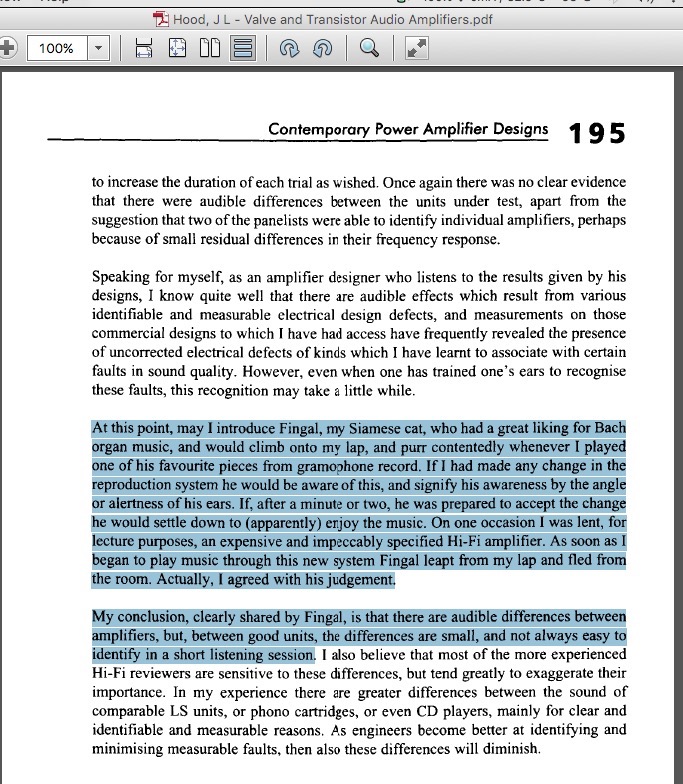You are using an out of date browser. It may not display this or other websites correctly.
You should upgrade or use an alternative browser.
You should upgrade or use an alternative browser.
Arkless Electronics
Trade: Amp design and repairs.
It would be interesting to better understand possible failure modes. I’ve only owned valve power amps for a decade or so (Prima Luna Prologue 2 and the Leak) and have yet to have any valve or other failure.
I assume given the huge number of surviving Leaks, Quads etc nothing irreparable tends to happen. Plus in my time as a volunteer on the Manchester SSEM replica I’ve never seen a valve failure do any damage beyond not working yet. With that machine the main point of failure tend to be old carbon resistors being way high or low and the circuit simply not working as a result. We had one resistor start smoking a while back, but replacement was all that was needed.
So, if a Leak Stereo 20 goes wrong how does it tend to go wrong? What should we look out for? I’m more interested in failure modes in a properly restored example, i.e. one where 60 year old resistors, caps etc aren’t the issue.
I’m assuming one channel will go noisy/off if an ECC83 fails, nothing more catastrophic than that, but I’m not clear about the possible failure modes of the EL84s and GZ34. What does one keep an eye out for?
With all suspect old components replaced, in rough order of likeliness:
By far the most common fault will be EL84's failing randomly. Loud cracks, firework display sometimes inside valve, glowing or even melted screen grid and often glowing anode.
Next most likely is GZ34 failure although Mullard ones seem very reliable. If using a modern GZ34 this is a likely suspect. Usually internal sparking followed by fuse blowing.
Crackles and frying noises caused by dirt in valve sockets etc is a common problem with St20's. Give 'em a wiggle and squirt of contact cleaner etc and it should sort it... for now.. Applies to all but GZ34 but ECC83's most suspect.
ECC83's problems usually cause crackles/hiss/frying noises.
Any valve can suffer heater failure of course.
And that's about it but a few further comments are:
1/ I disagree that the cathode resistors are another safety mechanism.
2/ Mains transformer can commonly leak wax even if fine. They run at a rather alarming temperature....
3/ The impedance selector plugs on the output transformer will very likely be dodgy and causing 1-2% THD unless they have been fettled. Solder a short bare wire between the holes in the top's of the spigots after removing the plastic cover. The cover is easily removed and replaced without damage.
martin clark
pinko bodger
Marchbanks
Hat and Beard member
I had a Mullard GZ34 fail on my Radford recently with these symptoms in the opposite order. A month or two of fuse blowing at two to three week intervals followed by a visible internal flash. After that it was only giving out 40-ish volts.Next most likely is GZ34 failure although Mullard ones seem very reliable. If using a modern GZ34 this is a likely suspect. Usually internal sparking followed by fuse blowing.
Tony L
Administrator
I had a Mullard GZ34 fail on my Radford recently with these symptoms in the opposite order. A month or two of fuse blowing at two to three week intervals followed by a visible internal flash. After that it was only giving out 40-ish volts.
The fuse-blowing would have raised deafening alarm bells for me. IIRC your amp is ‘part restored’ rather than being a full rebuild too, so I’d want to know if something else being borderline had actually taken the GZ34 out (they have a reputation of being exceptionally long-lasting). Hopefully it is the GZ34, but I’d still get it looked at and tested as at £100+ these days you don’t want to be blowing any more!
PS I’d be curious to know how a failing GZ34 could blow fuses weeks before giving up? I’d have thought it would just be a bit saggy and show voltage drop on the other side. How would it blow a fuse before the point of catastrophic failure?
Marchbanks
Hat and Beard member
You are correct Tony, it is almost completely original. Yes, it has been looked at and tested - and given a clean bill of health in all other respects! The problem (the bit I grasped) was gas in the rectifier as shown by a retreating getter. The more detailed explanation has been forgotten in the subsequent period, I apologize.The fuse-blowing would have raised deafening alarm bells for me. IIRC your amp is ‘part restored’ rather than being a full rebuild too, so I’d want to know if something else being borderline had actually taken the GZ34 out (they have a reputation of being exceptionally long-lasting). Hopefully it is the GZ34, but I’d still get it looked at and tested as at £100+ these days you don’t want to be blowing any more!
PS I’d be curious to know how a failing GZ34 could blow fuses weeks before giving up? I’d have thought it would just be a bit saggy and show voltage drop on the other side. How would it blow a fuse before the point of catastrophic failure?
Fortunately I have a couple of spare Mullards. One of them also has a dodgy looking getter but my repair man admitted (with a bit of a curled lip) that after a fortnight’s soak testing it seemed to be working perfectly, and the other (badged Bentley but with a 1965 Blackburn date code) looks NOS. Thats the one I’m using now.
Arkless Electronics
Trade: Amp design and repairs.
I wouldn't rule out that failure mode but it's unusual and I'm inclined to go along with Tony in that a fault elsewhere in the amp may have caused excessive current draw and caused the fuse to blow and that this overload on the GZ34 has eventually caused it to fail... however, this sort of current draw would most likely cause red anodes etc in the output valves. It's possible the excess draw was so large and sudden as to blow the fuse before anything else became visible of course. At the end of the day if a new GZ34 has cured the problem and it's run fine for a good while with a new one then obviously this says rectifier failure.
Marchbanks
Hat and Beard member
The Radford does run fairly close to its fuse limit even under normal operating conditions - 2A and (according to my Owl meter) 325 watts.
toprepairman
pfm Member
John_73, you'll be fine with 1W carbon film. The actual dissipation here is around 500 to 600 milliwatts.
John_73
pfm Member
John_73, you'll be fine with 1W carbon film. The actual dissipation here is around 500 to 600 milliwatts.
Thanks very much TRM!
Arkless Electronics
Trade: Amp design and repairs.
And an alternate opinion... Use at least 2W and 3W better. 1W resistors running at 600mW will get bloody hot and although they should remain reasonably reliable will probably discolour with the heat and may drift a bit over time.
It's no big deal and I'm sure 1W would be reliable for 5-10 years or more but bigger wattage will look less toasted and prob stick closer to marked value over time.
It's no big deal and I'm sure 1W would be reliable for 5-10 years or more but bigger wattage will look less toasted and prob stick closer to marked value over time.
John_73
pfm Member
Thanks Jez. I was initially going to order the following for the cathode resistors:
https://uk.rs-online.com/web/p/through-hole-fixed-resistors/4851975/
But the recent suggestion that these also function/double in a safety role gave me pause for thought.
What voltage do these resistors each ‘see’? The carbon films offer 500V working voltage whereas the wirewounds linked above are only 120V.
https://uk.rs-online.com/web/p/through-hole-fixed-resistors/4851975/
But the recent suggestion that these also function/double in a safety role gave me pause for thought.
What voltage do these resistors each ‘see’? The carbon films offer 500V working voltage whereas the wirewounds linked above are only 120V.
Arkless Electronics
Trade: Amp design and repairs.
Thanks Jez. I was initially going to order the following for the cathode resistors:
https://uk.rs-online.com/web/p/through-hole-fixed-resistors/4851975/
But the recent suggestion that these also function/double in a safety role gave me pause for thought.
What voltage do these resistors each ‘see’? The carbon films offer 500V working voltage whereas the wirewounds linked above are only 120V.
Those are ideal yes. They don't function in any safety roll and only see about 12 Volts.
Arkless Electronics
Trade: Amp design and repairs.
Thanks. Anything to be gained by going for the Mills non-inductive wirewounds or is that (yet) another case of audiophile excess?
Total waste of time as they are bypassed by electrolytics so don't see any signal, just the DC bias current.
John_73
pfm Member
Does anybody know the real-world operating voltages for C3 and C5 please? From the circuit diagram it seems C3 would be 160V max, but nothing is there for C5. I have 0.1uF 400V sets and 200V sets of the K40Y-9 Russian paper in oil types, and would prefer to use the 200V ones if possible as they’re less bulky, but wasn’t sure if the voltage rating was a tad too low. Cheers.
Arkless Electronics
Trade: Amp design and repairs.
Does anybody know the real-world operating voltages for C3 and C5 please? From the circuit diagram it seems C3 would be 160V max, but nothing is there for C5. I have 0.1uF 400V sets and 200V sets of the K40Y-9 Russian paper in oil types, and would prefer to use the 200V ones if possible as they’re less bulky, but wasn’t sure if the voltage rating was a tad too low. Cheers.
For C5 50V will do. C3 well you will probably get away with 200V but the issue here is the warm up time of the GZ34. If it warms up much quicker than the other valves there could briefly be 250 or more Volts there.
It's extremely unlikely that 200V caps will give any trouble here but if I had to sign off on some legal bollox as to what should be fitted I'd have to say 350V. IIRC I have 200V ones in this position in mine.
In ones where I've converted to SS rectifiers I've had to go to quite some lengths to deal with the fact that at switch on there can be about 470V on the main smoothing caps and coupling caps, plus that obviously as the EL84's just start to come to life similar V on them.... I used a long string of 5W Zeners on the one I've mentioned many times before and in the circuitry I have designed built and bench tested for my own St20, but never got round to fitting as yet, there is active circuitry involving high voltage mosfets which loads it down to the correct amount until the valves have warmed up...



